Information from the library
"Metallurgical Ukrainian"
The "Metallurgical Ukrainian" project was launched in 2021. The main goal of the project is to collect, store and increase the availability of rare and valuable publications (19th - first half of the 20th century) dedicated to the formation and development of the metallurgical industry. Electronic copies of the presented publications were made by the staff of the Scientific Library of IPBT UDUNT in 2022. The books are stored in the fund of rare and valuable publications of the Scientific Library of IPBT UDUNT.
1  2
2  3
3 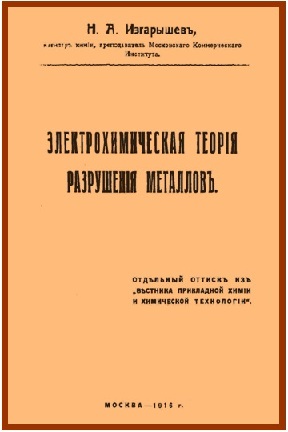
1. Гуржеевъ, С. Элементарный курсъ сопротивленія материаловъ и графостатики и ихъ приложенія къ машиностроению : для техническихъ училищъ и для самообразованiя. Изданiе 4-е. Петроградъ : Изданiе Л. Ф. Пантелѣева, 1915. 90,6 МБ.(Сканувала Радул М. А.) Повний текст
Gurzheev, S. Elementary course of strength of materials and graphostatics and their applications to mechanical engineering: for technical schools and for self-education. Edition 4th. Petrograd: Edition of L. F. Panteleev, 1915. 90.6 MB.(Scanned by Radul M.A.) Повний текст
The elementary course of the resistance of materials by S. Gurzheev consists of two parts. In the first, the main laws of resistance of materials, important formulas for determining the solid dimensions of parts of machines and buildings are considered. The second part contains the necessary data of graphostatics (they are used in the chapters "bending and breaking"). For more complete assimilation, solutions to problems and examples given in the textbook are considered.
2. Изгарышев, Н. А. Гальванопластика и гальваностегия. Москва ; Ленинград : Госиздат, 1926. 50,7 МБ.(Сканувала Верещак Т. Б.) Повний текст
Izgaryshev, N. A. Galvanoplasty and electroplating. Moscow ; Leningrad: Gosizdat, 1926. 50.7 MB. (Scanned by T. B. Vereshchak) Повний текст
The proposed book was written by an outstanding specialist in the field of electroplating and electroplating, Prof. N. A. Izgarishev under the general editorship of P.P. Lebedev. Galvanostegia and galvanoplasty are understood as the art of besieging metals on appropriate objects in the form of shiny, matte, thin or thick layers, depending on the circumstances. This art, which is now of great technical importance, is given without much effort, but still requires some skills and experience. In this manual, the purely practical part is preceded by a short theoretical part. First, the necessary theoretical information is given for a greater or lesser understanding of electrolysis phenomena. Next, the sources of electricity most convenient for use in the home environment, laboratories and small workshops are described, and then the methods of depositing the most common metals in order to cover them, as well as to obtain metal relief images, are given. Everything is written in the manual, mainly in relation to working conditions in laboratories, small workshops or even in a home environment.
3. Изгарышевъ, Н. А. Электрохимическая теорія разрушенія металловъ [Електронний ресурс] / Н. А. Изгарышевъ. – Москва : [Типо-лит. Русскаго товарищества], 1916. – 48,1 МБ.(Сканувала Верещак Т. Б.) Повний текст
Izgaryshev, N. A. Electrochemical theory of destruction of metals [Electronic resource] / N. A. Izgaryshev. - Moscow: [Tipo-lit. Russian Association], 1916. - 48.1 MB. (Scanned by T. B. Vereshchak) Повний текст
This book deals with electrochemical corrosion of metal structures. The destruction or corrosion of metals under the influence of various factors (air, water, acids) is characterized by the word "corrosion". Electrochemical corrosion, this hidden and dangerous enemy, was discovered only after the advent of artificial galvanic cells. In this book, the existing electrochemical theories of those basic typical conditions, which are generally necessary for the appearance and functioning of galvanic cells, were considered. In addition to the corrosion that occurs as a result of galvanic work of some parts of the building, the author believes, at present we have to pay close attention to the destructive effect of the so-called stray electric currents that appear in the soil of cities. Theoretical considerations, laboratory experiments and measurements made in the soil itself leave no doubt that stray currents have an extremely harmful effect on underground metal structures.
4  5
5 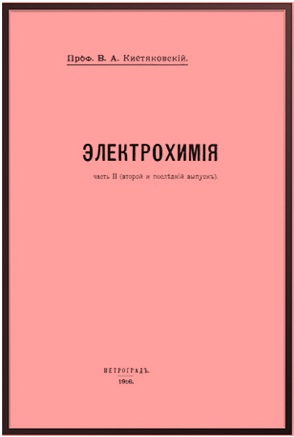 6
6 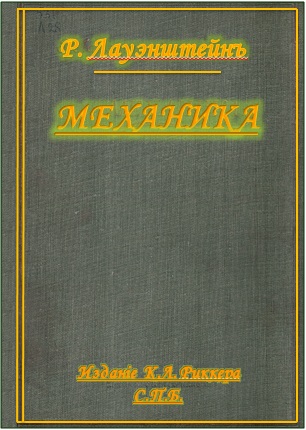
4. Кистяковскiй, В. А. Электрохимiя. Санктъ-Петербургъ : Типо-литогр. Шредера, 1912. Ч. 1. 81,5 МБ.(Сканувала Онуфрієнко М. М.) Повний текст
Kistyakovsky, V. A. Electrochemistry. St. Petersburg: Tipo-lithograph. Schroeder, 1912. Part 1. 81.5 MB. (Scanned by Onufrienko M.N.) Повний текст
5. Кистяковскiй, В. А. Электрохимiя. Петероградъ : Типогр. Р. Г. Шредера, 1916. Ч. 2 (второй и послѣднiй выпускъ). 50,7 МБ.(Сканувала Радул М. А.) Повний текст
Kistyakovsky, V. A. Electrochemistry. Petersburg: Printing house. R. G. Schroeder, 1916. Part 2 (second and last issue). 50.7 MB.(Scanned by Radul M.A.) Повний текст
The textbook of Professor V.A. Kistyakovsky "Electrochemistry" consists of two parts. The author introduces readers to the basic laws of electrochemistry; phenomena associated with galvanic current in aqueous and non-aqueous solutions. Kistiakovsky V.A. recommends this book to students of the metallurgical department of the Polytechnic Institute.
6. Лауэнштейнъ, Р. Механика. Элементарный курсъ / ред. К. Аренсъ ; переводъ съ 7-го изд. М. П. Новгородскаго. Санктъ-Петербургъ : Изданiе К. Л. Риккера, 1908. 85,1 МБ.(Сканувала Бондар Л. М.) Повний текст
Lauenstein, R. Mechanics. Elementary course / ed. C. Ahrens; translation from the 7th ed. M. P. Novgorodsky. St. Petersburg: Edition of K. L. Ricker, 1908. 85.1 MB. (Scanned by L. N. Bondar) Повний текст
This course "Mechanics" was developed by the engineer and professor of the School of Construction and Crafts in Karlsruhe Rudolf Lauenstein in 1904. In 1906, his friend and colleague Professor K. Arens completed further processing of the "Mechanics" course. The book was published in St. Petersburg, translated by M.P. of Novgorodsky in 1908. The proposed course "Mechanics" contains material that is aligned with the requirements of secondary technical schools (craft schools). At the same time, more attention was paid to practical applications than to purely theoretical studies: a number of practical problems with solutions were added to each section of the book. 218 drawings are attached to the text. This course "Mechanics" describes the basic concepts of mechanics: general properties of bodies, geometric movements of bodies. Physical laws are described: inertia, gravity, counteraction, mechanical work of forces. The doctrine of the balance of forces acting on a solid body is presented; the doctrine of the motion of solid bodies. The doctrine of the equilibrium of droplet-liquid bodies is considered. The definition of solid, liquid, drop-liquid and gaseous bodies is given. The doctrine of the equilibrium of gaseous bodies and the movement of gaseous bodies is presented. The "Appendix" contains 6 tables: friction coefficients, specific gravity, trigonometric values, logarithms of numbers from 1 to 1200.
7 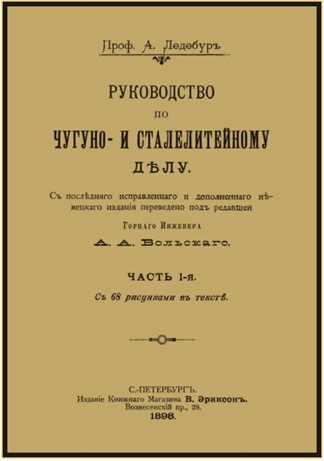 8
8 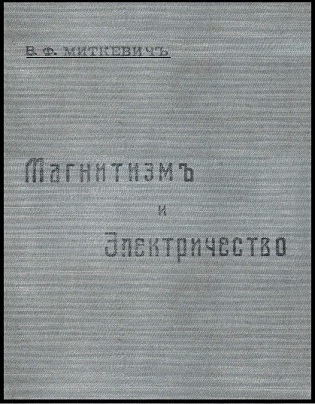 9
9 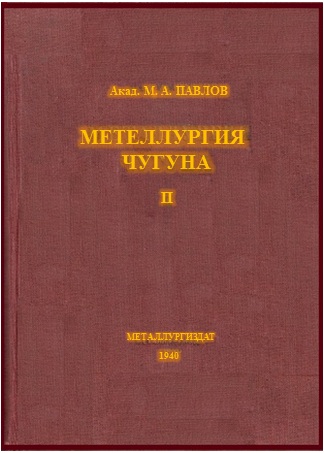
7. Ледебуръ, А. Руководство по чугуно- и сталелитейному дѣлу [Електронний ресурс]. Часть I-я / проф. А. Ледебуръ. ; сь послѣдняго исправленнаго и дополненнаrо нѣмецкаго изданiя переведено подъ редакцiей горнаго инженера А. А. Вольскаго – С.-Петербургъ : Книжный магазинъ В. Эриксонъ, 1898. – 118 МБ.(Сканувала Бровкіна С. В.) Повний текст
Ledebur, A. Guide to iron and steel business [Electronic resource]. Part I / prof. A. Ledebour. ; from the last corrected and supplemented German edition translated under the editorship of mining engineer A. A. Volsky - St. Petersburg: V. Erikson Bookstore, 1898. - 118 MB.(Scanned by Brovkina S.V.) Повний текст
This book provides a guide to the iron and steel industry, since liquid iron was directly fed into the casting molds from the blast furnace. In a blast furnace, iron is produced from ore; in the Bessemeriv converter, liquid malleable metal is obtained from cast iron; in the Marteniv furnaces, liquid malleable metal is mainly produced from various types and grades of iron. According to the technical composition and the properties that depend on the composition, the following types and varieties of cast iron are distinguished: manganese cast iron, mirror cast iron, white radiant cast iron, flint cast iron, dark gray cast iron, light gray cast iron, light cast iron. Cast iron and cast steel also differ in the way they are produced and in their properties: crucible steel and related varieties, Marteniv metal, Bessemeriv metal. The most important properties of cast iron are described in connection with its chemical composition. Mechanical properties of cast iron, resistance against chemical influences were determined. The metal was subjected to long-term heating to determine how the properties of iron change. The metal intended for redistribution was subjected to a chemical test, and the casting itself was also tested. When melting in crucibles, welding steel turns into cast steel. In foundry workshops, when melting in crucibles, various auxiliary devices are used: taps, taps. In the foundry business, it is often necessary to subject casting forms to drying, while chamber dryers are used. Described machines: rammers, crushers, drums, clay mixers, straw twisting machines.
8. Миткевичъ, В. Ф. Магнитизмъ и электричество. Санктъ-Петербургъ : Изданiе А. С. Суворина, 1912. 95,1 МБ. (Сканувала Сітковська Л. М.) Повний текст
Mitkevich, VF Magnetism and electricity. St. Petersburg: Edition of A.S. Suvorin, 1912. 95.1 MB.(Scanned by Sitkovskaya L.M.) Повний текст
This edition of V.F. Mitkevich's "Magnetism and Electricity" is different from the usual. The theory of electric current is based on the phenomenon of electromagnetic induction and the magnetic field of the current. In the phenomenon of induction, electromagnetic inertia is especially manifested, which generates reaction forces of an electrical and mechanical nature and is a general property of the current circuit.
9. Павлов, М. А. Металлургия чугуна : учебник для металлургических вузов. Издание 4-е. Ленинград ; Москва : ГНТИ лит. по чер. и цветн. металлургии, 1940. Вып. 2 : Доменный процесс. 131 МБ.(Сканувала Корнілова І. М.) Повний текст
Pavlov, M.A. Iron metallurgy: a textbook for metallurgical universities. Edition 4th. Leningrad; Moscow: GNTI lit. in black and color. metallurgy, 1940. Issue. 2 : Domain process. 131 MB. (Scanned Kornilova I.N.) Повний текст
The book provides a detailed, based on new data, presentation of the theory of blast furnace smelting and is a study guide for students of metallurgical institutes who have chosen blast furnace production as their specialty. It can also serve to improve the qualifications of persons who have not completed a special course in cast iron metallurgy, but have sufficient theoretical training to master its content.
10 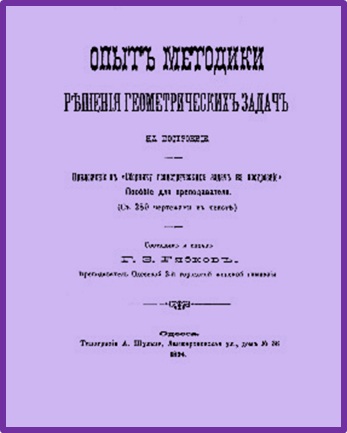 11
11 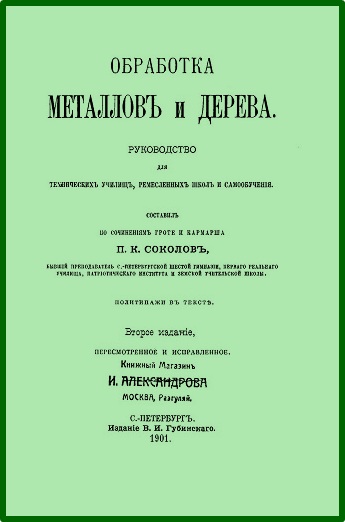 12
12 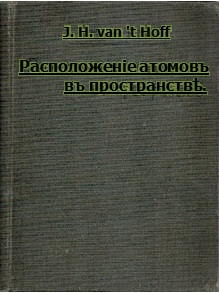
10. Рябковъ, Г. З. Опытъ методики рѣшенія геометрическихъ задачъ на построеніе [Електронний ресурс]. Одесса: Типографiя А. Шульце, 1894. 119 МБ. (Сканувала Сорока О. В.) Повний текст
Ryabkov, G. Z. Experience in the technique of solving geometric problems for the construction [Electronic resource]. Odessa: A. Schulze Printing House, 1894. 119 MB.(Scanned by Soroka O.V.) Повний текст
The experience of the technique for solving geometric problems for construction serves as an appendix to the "Collection of geometric problems for construction" published simultaneously with it. Every teacher is well aware that it is not easy to lead students in solving geometric construction problems, in addition to the necessary stock of theoretical knowledge, the leader must have great skills, practice and apply them quickly and in accordance with the requirements of class teaching to solve problems. In order to somehow facilitate the work of the teacher, in particular beginning his pedagogical activity, an attempt was made to collect, distribute and group everything that is necessary for the proper formulation of the teaching of geometric drawing in connection with solving problems. The purpose and purpose of the experience of the methodology is determined by its content and is intended for teachers who want to use the latter.
11. Соколовъ, П. К. Обработка металловъ и дерева [Електронний ресурс] : руководство для техническихъ училищъ, ремесленныхъ школъ и самообученiя. С.-Петербургъ : Изданiе В. И. Губинскаго, 1901. 123 МБ. (Сканувала Тарахова Н. А.) Повний текст
Sokolov, P. K. Processing of metals and wood [Electronic resource]: a guide for technical schools, vocational schools and self-learning. St. Petersburg: Edition of V. I. Gubinsky, 1901. 123 MB.(Scanned by Tarakhova N.A.) Повний текст
This work is a textbook of metal and wood technology. The book was written for readers familiar with chemistry and physics, namely for students of real schools, for whom this book can serve as a guide in their studies. This book will teach schools to treat technology with respect and to pay more attention to it, to treat it as a science of great general importance.
12. Van 't Hoff, J. H. Расположенiе атомовъ въ пространствѣ. / Авторизированный переводъ съ III-го переработаннаго нѣмецкаго изданiя Б. Беркенгейма. Под ред. Н. Д. Зелинскаго. Москва : Т–во Печатня С. Н. Яковлева, 1911. 67,1 МБ. (Сканувала Онуфрієнко М. М.) Повний текст
Van 't Hoff, J. H. Arrangement of atoms in space. / Authorized translation from the third revised German edition by B. Berkenheim. Ed. N. D. Zelinsky. Moscow: S. N. Yakovleva Printing Press, 1911. 67.1 MB.(Scanned by Onufrienko M.N.) Повний текст
In this edition, the author for the first time presented the theory of the spatial arrangement of atoms in the molecules of organic compounds. This work is the basis of modern stereochemistry.
Information

